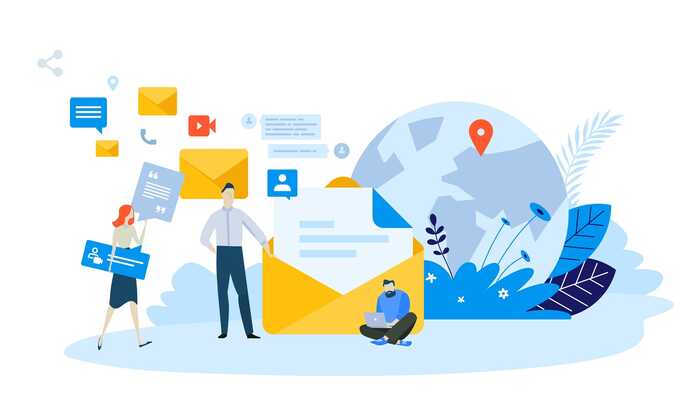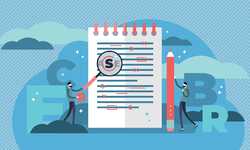How To Supercharge Your Emails With Personalisation
Email marketing is an inexpensive way to connect with your customers and establish trust and authority in your industry.
It's a loud, saturated market out there - how do you elevate your business, cultivate leads and interact positively with your customers when all your competitors are trying to do the same?

Picture this...
Imagine two emails hit your inbox selling the same product. How do you choose between them? Who offers more value?
As you look closer, you see they each take very different approaches - the personalised route and the generalised route. The personalised email involves addressing you by name with a pitch tailored to you. It’s personal. They made an effort. Whereas the other email could’ve been sent to anyone with no personalisation at all. It’s bland and impersonal.
Most people automatically trust the personalised email more, bestowing it with more potential value to the reader, because that company has clearly invested time and resources into learning more about their customers. You choose them to buy from.
Email Personalisation
NounPersonalisation in email marketing is tailoring an email campaign to a specific subscriber by using their unique data to learn more about them and better address their needs.
What to Personalise in your Email
Personalising an email can range from simple but effective methods to complex and sophisticated automated targeting based on a number of factors. The personalisation in your emails can use information from a number of demographics, for example:
- First and/or last name
- Location
- Age
- Job Title
- Interests
- Buying history
The fact is that email personalisation is highly effective because it makes your emails relevant. So how can you personalise your emails to make them more clickable?
Studies have demonstrated that personalised subject lines are 26% more likely to get opened.
That’s a lot of potential leads.
Top Tip: Think Strategically and Be Realistic
Adding some personal touches to your email is easy - and we’ll get to that below. Something to keep in mind right from the off, you’ve got to be smart about email personalisation. Most small businesses don’t have the budget for state-of-the-art, hyper-personalised emails. It takes time and resources that probably can’t be spared.
That doesn’t mean it’s off the table. Personalising your emails is possible, even without a gargantuan database. You already have information about your customers - using it creatively and cleverly makes sending personalised emails achievable for businesses of all types and sizes.
This means not only personalising emails around customer names, ages and other fixed data... It's also about when to send emails.
This opens up a plethora of personalised email possibilities - this list is a great starting point for creating a list of opportunities to connect with your customers.
How To Do Email Personalisation Well
Here are some specific examples of what you should personalise, and how:
The Subject Line
This is the usual suspect when it comes to email marketing personalisation.
This is achieved with merge tags - what looks like a snippet of text wrapped in special characters. When you insert a merge tag into your email subject line, it'll be automatically replaced with the customer data that corresponds with that particular tag - such as a first name or address.
This eliminates the need to manually write out different emails to all of your customers, which would be an impossible task if your subscriber count in large.
Personalising the subject line with the customer’s name is a great first step, but don’t stop there - use their location, or another demographic to seize their attention. Humans tend to snap to attention when our names or other identifying information are used!
The Email Copy
Those merge tags don’t just work in the subject line - they can be used in the email’s body content too. Try spacing it out at the start and end to catch the eyes of skim-reading customers, and in the middle to snap their attention back.
Where possible try to vary away from just using their name, for example, if you're B2B marketing include their name and the company name at different points in the email.
Birthdays
People like to treat themselves on their birthdays - and a well-crafted email congratulating them on becoming a year older and weaving in some kind of birthday offer or promo is much more likely to be read and clicked on than at any other time of year.
This is easy information to get - just ask your customer for their birthday when they sign up. Then you can automate a birthday email to correspond without having to lift a finger. Be sure to change them up every year though - eventually customers will get bored of the same template.
Anniversaries
If you’re in the type of eCommerce business where knowing literal anniversaries would be beneficial, ask customers for them when they sign up! These are great dates to send curated product offering and discounts.
But ‘anniversary’ doesn’t just mean weddings - it also means subscriber anniversaries. How long have they been a subscriber and customer?
Try sending a ‘subscriber anniversary’ email, thanking them for a year’s worth of loyalty. It can do wonders for customer satisfaction, knowing they’re noticed and valued.
Product Follow-Ups and Recommendations
Birthdays, wedding anniversaries and subscriber anniversaries are simple dates that are easy to find.
Other actions might be trickier to track, but they’re just as effective for following up with a customer. If they’ve bought a perishable or non-evergreen product (like a moisturiser) consider sending them a follow-up email a few months later when they’re likely to need replenishing.
On the same note, why not send recommendations to tie in with their buying habits? If they’ve bought moisturiser, perhaps an eye cream or cleanser would make a natural addition to their routine? Consider what they’ve bought carefully and tie in another product or offering organically.
Just make sure it’s relevant - there would be no point in sending a watering can to someone who has just purchased moisturiser.
Cart abandonment
Sometimes customers get to checkout and then leave your website. Maybe they got distracted, had second thoughts, ran out of time - it’s a missed sale.
Try reaching out with an automated cart abandonment email, personalised to the item(s) they left behind, to encourage them to reconsider. Use the name of the product in the subject line to grab their interest, and consider offering a small discount if they re-purchase within a certain time frame with a code in the email.
Subscriptions
If you’re a subscription-based business, don’t rely on customers hopping into their accounts to renew. Send an automated email a while before their subscription expires to let them know the time to renew is coming up - even consider sending a small series of emails, perhaps revisiting products they’ve bought, events that have occurred in that timeframe, and tease at what’s on offer in future to pique their interest.
Seeking reviews
We know that great reviews can really bolster your web presence and even generate more leads - so reach out and ask your customers for reviews!
The word ‘review’ in the subject line is a popular option for clicking, so you’re much more likely to get engagement.

Logistics of Personalisation
Talk to your web agency (or do some digging) to find out what times during the day emails get the best open rates and engagement rates. You can then structure your sending schedule around that.
All of this can be made easier using one of the all-in-one email marketing platforms we mention in this Email Marketing Blog.
At Sonder we use MailChimp, and we not only write compelling emails that encourage customers to click - we design them to be beautiful and on-brand.
You don't have to implement every single opportunity for personalisation on this list - but choose a few that are relevant to your audience, and watch as your customer engagement steadily improves.
Other Relevant Resources
There's always more to learn, we recommend these blogs:
Posted by Ange Swan on March 22nd 2021




